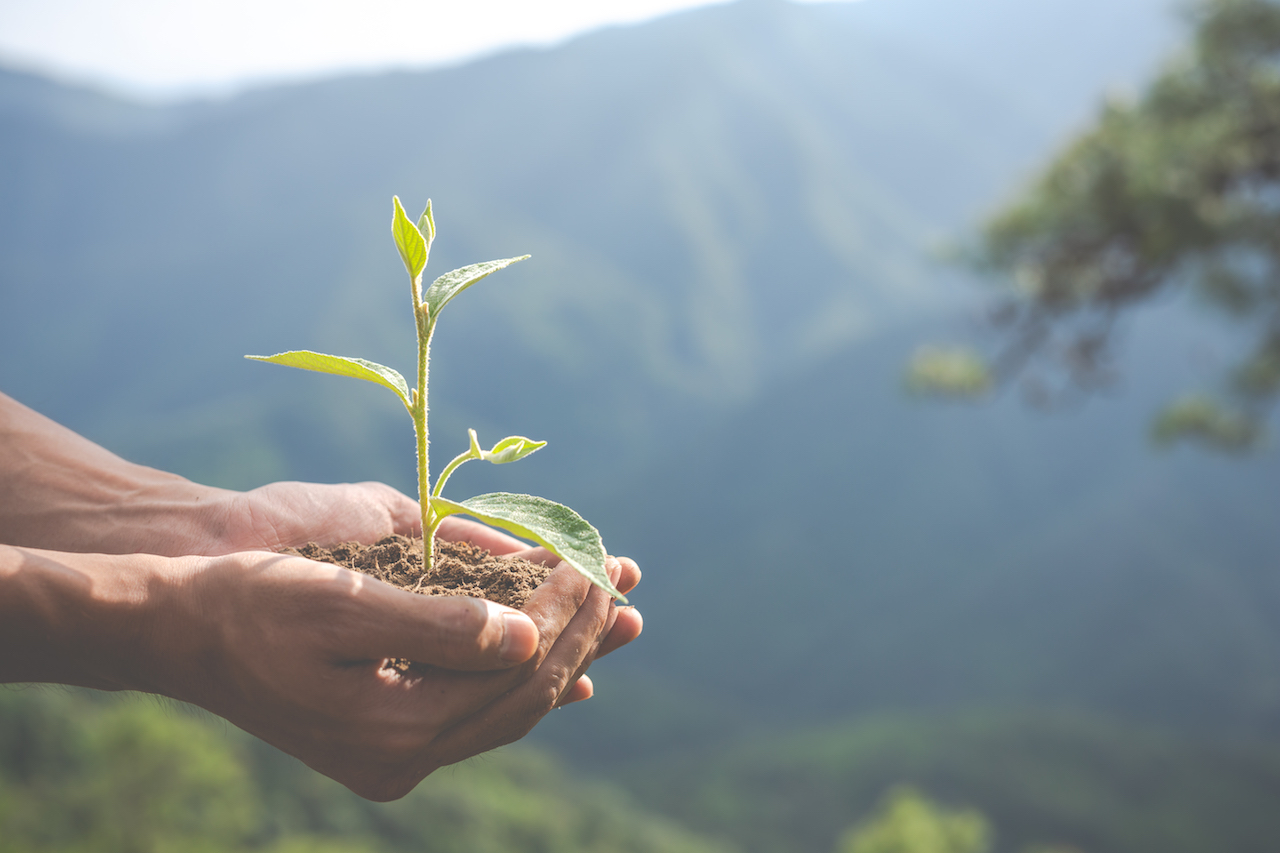Kirazlıyayla Struggle: Public And Nature Against Capital

We’ve talked to the Co-spokesperson of the Ecology Union, the Chairman of the Board of Kazdağı Association for The Preservation of Natural and Cultural Resources Süheyla Doğan about the problems in the EIA (Environmental Impact Assessment) process, the destructions planned to be done in Kirazlıyayla and other regions and about the situation the world after the epidemic.
The works initiated for the establishment of a mining facility in Kirazlıyayla, one of the villages of Bursa that stand out with its natural beauties, are being protested by ecology NGOs and local people on accounts of the fact that it will harm the ecosystem of the region and human health. While a public opinion is being formed with the hashtag of #LeaveBursa on social media, NGOs such as the Ecology Union are looking for ways to stop the natural plunder in Kirazlıyayla by hand in hand with the public.
You are struggling together with the local people against the works initiated by Meyra Mining in Kirazlıyayla. Apart from the damage caused by the facility to be built, irregularities in the initiation of works and on the EIA report are noticeable. First of all, what would you say about the credibility of the EIA reports?
EIA processes have turned into a process of deceiving the public. In order to settle in the area as soon as possible, companies decide to get EIA Permits by applying for EIA permits under 25 hectares although the license areas are large in order to exceed the size and capacity limits in the Annex-1 and Annex-2 lists which are the annexes of the EIA Regulation. In this case, since there had no meetings been held with the public, the public cannot be informed and is not aware of the project. Firms settle in the area by obtaining work permits for this small area. Then, they prepare an EIA Application for a larger area in line with their real goals by preparing a capacity increasing project. In this process, public information meetings are held by hanging an announcement poster (if the headman is sensitive enough) to one of the coffee shops at the village, and since the information given at these meetings are very technical, the public cannot understand the projects sufficiently. Since women do not go to the coffee shops, and since the advertisement is hanged at only one of them, woman, thus everyone are not informed. Villagers’ access and follow-up to the EIA Report which was later announced via e-CED, and to the Review and Evaluation Commission held in Ankara is also not possible. Firms also often do not exhibit their plans for facilities such as enrichment and waste pools in their initial EIA applications, they prefer a third phase for this. The reason for this is that EIA formats are a bit more complicated and companies want to avoid this process as much as possible. The Ministry of Environment and Urban Planning is deliberately and willingly being instrumental in these processes and accepts applications for small EIA areas, although it knows that the license areas are large. We pressed as many charges as possible for “EIA Not Required” decisions made this way and we mostly won the lawsuits on the grounds of “license area size”.
How did the EIA process proceed in Kirazlıyayla? Could you inform us about the unlawfulness in the region?
We observe a similar process in Kirazlıyayla. Meyra Mining company applies for EIA for 24.89 hectares in 2013. Since it is below 25 hectares, it receives an “EIA is not required” certificate. In 2015, the company increased the area to 273 hectares by increasing the capacity. In the EIA Report presented in 2015, it says that it will not make processing and that it will do the flotation elsewhere. However, by 2019, it adds a capacity increase to the project as well as the flotation facility and the waste pool.
According to the company’s latest EIA report, the area consists of forestland and agricultural areas. Non-agricultural use permit must be obtained for agricultural areas. The company’s application was not approved for the third time. Despite this, the company carries out logging activities. In addition, in order to start working at the new EIA field, they must have obtained a 1st Class Non-Sanitary Enterprise License. In the written application to the Bursa Governor’s Office, it was asked whether there was a Class Non-Sanitary Enterprise license and it was found out that it has not yet received. The Governor’s Office has not yet responded to the most recent application. It is not legal for the company to operate without a Class Non-Sanitary Enterprise License.
A lawsuit was filed with the request of the local organizations to stop execution. The legal process continues.
What risks do the mine enrichment facility and the waste dam planned to be built carry for the region’s ecosystem and human health? As an NGO that also communicates with the people of the region, what are the main complaints of the people living there?
The Ministry of Environment and Urbanization lists the environmental impact of mineral processing plants as follows:
“Environmental Effects:
The important effects of Mineral Processing Plants to the environment can be listed as follows:
Dust, vibration, noise, chemical waste will be generated. Liquid wastes resulting from the watery system processing need sedimentation pools and are therefore collected in the pasa dams. Storage of liquid wastes is often effective in water relations and salting, and can contain chemical wastes used to treat agricultural poisonous metals or ores. Overfilled sedimentation pools are quite harmful and dangerous. With the effects of these, hydrostatic pressure increases and they may pose a direct danger to the environment in case of waste dam walls collapsing or leaking. Generally, the presence of high levels of salt and other metals harmful to vegetation can be quite problematic because of the drainage difficulties in the waste dam. In situations such as waste sludge coming out of the facilities being stored randomly without using waste dam and analysis, sludge consisting of cyclones and marble paledens not being stored in regular storage areas, spare devices not being available as a precaution against device malfunctions at HCN measurements in the field of bulk extraction, the interception channels in the fields of bulk extraction not being suitably built, cyanide storage areas not being made according to standards, recycling industrial wastewater within the facility without passing through settling cyclones and recirculation of water used in processing facilities without passing through settling pools, these facilities will have pretty negative impacts on the environment and human health.
Since processing facilities and waste pools have not been built yet, the public is concerned and objecting for the above reasons.
Declassification of the degree of the protected site of Olympos, the destruction of Hasankeyf, heavy construction equipment to enter Lake Salda, the attempts to plunder the Kaz Mountains… These are all on our agenda. When you look at the general picture as the Ecology Union, what are the most important problems of Turkey in terms of ecology policies? Which concrete steps should be taken immediately, where do you see the solution at?
The current understanding and the development policy in our country is focused on profit and plunder and favors capital. The rights of nature and the interests of the people are not respected. A policy favoring capital is followed at all costs which leads to great destruction and plunder of nature, and the environment and human health are neglected. With the Mining Law and regulations, and with amendments to many other laws, all the restrictions have been uplifted with the legal arrangements for exploitation of all natural and cultural assets for investors whose only concern is to get unearned income. The legal system has been transformed. Some of the acquisitions achieved through the legal processes have been rendered impractical through the decisions of the Council of Ministers or the Governorships. There is pressure and violence against local people and non-governmental organizations. Some life defenders such as Ali Ulvi and Aysin Büyüknohutçu were murdered by mafias. It is important to carry out both the struggle in the field and the legal struggle together and to provide solidarity at the national and international level in this process. On the other hand, efforts should be made to change the laws of plunder and exploitation and to protect the autonomy of the legal system. The Ecology Union, which will unite local struggles and create a solidarity ground becomes very important in this sense. The solution is of course possible with the establishment of an order that mainly sides with the people and nature, and we will continue to make breaches in this order by increasing our struggle in the current order.
You are also trying to create a public opinion on social media, you have also created a visibility for Kirazliyayla with #LeaveBursa hasthag. The Ecology Union already emphasizes the collaboration and strength of solidarity as a structure. What are the methods you follow in reaching all segments of the society, especially the people of the region and in creating public opinion in ecology struggles? How is your communication and cooperation with media organs, other NGOs and relevant institutions of the state?
Ecology Union currently has 63 components from all over the country. Problems in each region reach us through our communication channels or calls of which our Union is a member. In addition, apart from our components, other problems and struggles that are reflected to the press, to the public and to social media are followed and reported. Social media accounts are followed. Contact information are retrieved and interviews are made by contacting the locals. Local road maps and technical and legal information support are provided, and non-components are invited to become components.
Our Union announces its activities and statements via social media accounts and its website and via press letters. It visits local people and organizes regional meetings. We have a regular relationship with media organs, but very few hear our voice while mainstream media totally ignores us. Our communication with other NGOs is well. We have contacts at the central level as we cooperate locally. Apart from public meeting permit applications, our direct relationships with the state institutions are scarcely any. However, our components come across state institutions at the local struggle areas.
In addition to the bad effects of coronavirus, our world goes through a period where nature, air pollution and carbon footprints are reduced. What kind of world do you foresee after the pandemic? Is it possible for a more sensitive, less-consuming humanity that gives the least damage to nature emerge, or are we too optimistic?
During the Covid-19 process, due to people staying at home and driving less, and due to less economic activity and less consumption, the nature started breathing again; air pollution has decreased, birds and other animals have become more visible, plants have been revived. The relationship between the Covid-19 epidemic and deforestation has been revealed by scientists, and the disasters of the results of the intervention in nature have been revealed with the emergence of research reports about the effect of air pollution on Covid-19. This process led to inquiries. We hope these inquiries shed light on the measures and policies to be taken in the reconstruction of a post-Covid world. A more sensitive, less consuming and less damaging humanity is possible, it is good to be optimistic and it is useful to work in solidarity without getting tired to achieve this.
I would like to add that in the Covid-19 process, the current situation of the groups such as women, children, the poor and immigrants, who have been damaged and affected, needs to be investigated and tackled for special measures to be taken.

Bizi Takip Edin